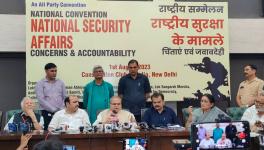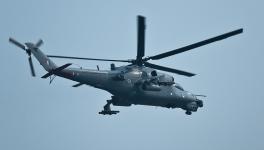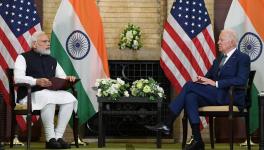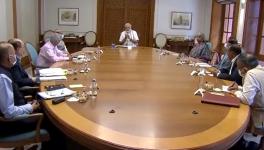Defence Production: Learning From Mistakes

The election results, which saw a sweeping victory for the Bharatiya Janata Party-led National Democratic Alliance amongst several things, will likely bring the Rafale scam to a close. The likelihood of the Supreme Court agreeing to review its previous judgment or allowing an independent probe are bleak. So, while the scam may now get buried, there is much the new government can do to undo some of the damage caused.
One of the biggest casualties of the new Rafale deal was how a defence navratna, Hindustan Aeronautics Ltd (HAL), got short-changed and was completely kept out from playing any role in the Rafale deal. This when HAL was looking forward to begin production of fighter jets under Transfer of Technology with a 70:30 work share agreement with French company, Dassault.
In order to justify the outright purchase and the offset deal going to a novice with a poor business record, public abuse and damnation was heaped on a defence navratna by the ‘high and mighty’. It was like a moment of ‘sugar rush’, where all and sundry joined in running down HAL. Yet, the very same senior officers of Indian Air Force (IAF), who condemned HAL, are also on record praising the public sector defence company for providing excellent logistical back-up in the shape of service and maintenance of IAF fleet during last year’s “Gaganshakti” exercise.
Despite the condemnation, the corporatisation, with dependence on market and depletion of its financial reserves in the previous years, HAL’s audited report for 2018-19 shows the company increased its turnover by nearly 8% over the corresponding period of 2017-18. Thus, its turnover rose to Rs 19,705 crore from Rs 18,284 crore. Its profit after tax rose to Rs ,2282 crore compared with Rs 1,987 crore. Its order book as of March 31, 2019, shows Rs 58,000 crore and includes Rs 5,000 crore for the last 12 Sukhoi 30 MKIs, another Rs 10,000 crore for two types of helicopters (one joint venture with Russia for Kamov and another indigenous Light Combat helicopter). While HAL’s helicopter division is doing well, its aircraft division has only Tejas where “in the pipeline” are Rs 50,000 crore for 83 Tejas. The helicopter has had its share of detractors but it enjoys praise from others who point to its indigenousness and thus underlines HAL’s capacity to absorb and/or develop high technology.
Now that delivery of Rafales will begin from September, the next issue is the Request for Proposal for 114 fighter jets that was initiated last year. Here it is still possible for the new Government to make amends for their wrong decision of April 2015 by ensuring that at least now HAL is brought into the picture. More important than order is the fact that scarce resources of the country went into making HAL a ‘navratna’. For all the problems afflicting HAL, poor work ethic etc., the point is that country has spent tens of thousands of crores on it. They have acquired over eight decades of capability to handle diverse sets of fighter jets -- from producing to servicing and maintenance -- yet the company’s full potential remains to be tapped.
It can be argued that instead of getting mesmerised by private sector-led military production, the government should look to reform defence public sector units and turn them around. When resources are scarce, and already there is huge investment made in DPSU’s, then it makes sense to compel them to perform better than to slowly bring about their demise through privatisation.
Newsclick’s defence analyst D Raghunandan has argued that now that India has opted for outright purchase of Rafale, it may be better if India settles for Rafale fighter jets to be produced by HAL, given that it has a 50-year-long history of working with Dassault Aviation and by March 2015 had agreed on 70:30 work share ratio.
The reason for advancing this argument is because the Modi government showed that it is capable of changing tack when it signed an Inter-Government agreement with Russia on February 25, 2019 for manufacturing 750,000 7.62X39 mm AK 203 assault rifles in Ordinance Factory Board’s Korwa (Amethi) plant. The history of assault rifles is rather long and ardous. Sujan R Chinoy and Laxman Behera in an article point out that within 32 months of commencement, the entire production would become 100% indigenous.
This can be appreciated by looking at what happened in the past.
It was in 2009 when the Defence Acquisition Council gave in-principle approval to procure 1,87,825 rifles under “Buy and Make in India” category for production by Ordnance Factory Board (OFB). In November 2011, a Request for Proposal (RFP) was issued for dual calibre rifle capable of firing 5.56X45 mm and 7.62X39 mm ammunition. But stringent technical specifications put off vendors. The RFP was withdrawn in June 2015. A new INSAS IC 5.56X45 mm was produced by Rifle Factory, Ishapur, and met required technical and operational parameters, including the reliability test.
In August 2016, the Army, however, changed the specifications to 7.76X51 mm under a new operational doctrine of “shoot to kill” against the earlier one of “incapacitation” of adversary. INSAS IC was left high and dry and OFB was instead asked to develop 7.62X51 mm assault rifle. The prototype was ready by May 2017, but Army expressed its dissatisfaction. The development by OFB was scuttled. Instead, in February 2019, it was decided to buy, through Fast Track Procurement, 72,400 Sig Sauer rifles from the US company for Rs 700 crore and few days later, IGA signed with Russia for a joint venture to produce AK 203 by OFB’s Korwa unit.
What is evident from the above is that it is not entirely the fault of DPSUs or OFBs that things go wrong. While they must be pulled up for shoddy work or poor work culture, it needs emphasising that they are also victims of changing policy decisions and change in specifications. Equally, the armed forces display lack of confidence regarding them. Ajai Shukla is right when he pointed to how Advanced Towed Artillery System was developed by Defence Research & Development Organisation in partnership with Kalyani Group and Tatas, which will reduce our dependence on imported artillery guns.
However, espousal of introducing competition between public and private sector i.e. to have one private sector competitor for eight DPSUs and exposing OFBs to private competition, may appear a reasonable proposition, but it is not. Given that we are not flush with resources, such an approach will be more expensive and wasteful. The US is not a good example for India to follow because the two countries are as apart as chalk and cheese, not to speak of the size of our still disputed gross domestic product, which is far below that of US. Most of all, as former defence minister late Manohar Parrikar had publicly pointed out that there was no guarantee that there will always be lucrative order to offer. So, while the public sector can afford idle capacity, the private players with their investments driven by dream of lucrative profit, will be seeking government subsidy to bail them out.
Just as the government retrieved the situation by pushing ahead with ‘Made in India’ by OFB, something similar needs to be done for HAL and other public sector defence units to maximise the use of existing resources rather than create more ‘white elephants’ that will need public funds to keep their investors happy.
So, if national security is a key concern, one hopes the new government moves wisely, because whatever course adopted will have consequences for the public exchequer and impact future generations.
Get the latest reports & analysis with people's perspective on Protests, movements & deep analytical videos, discussions of the current affairs in your Telegram app. Subscribe to NewsClick's Telegram channel & get Real-Time updates on stories, as they get published on our website.
























